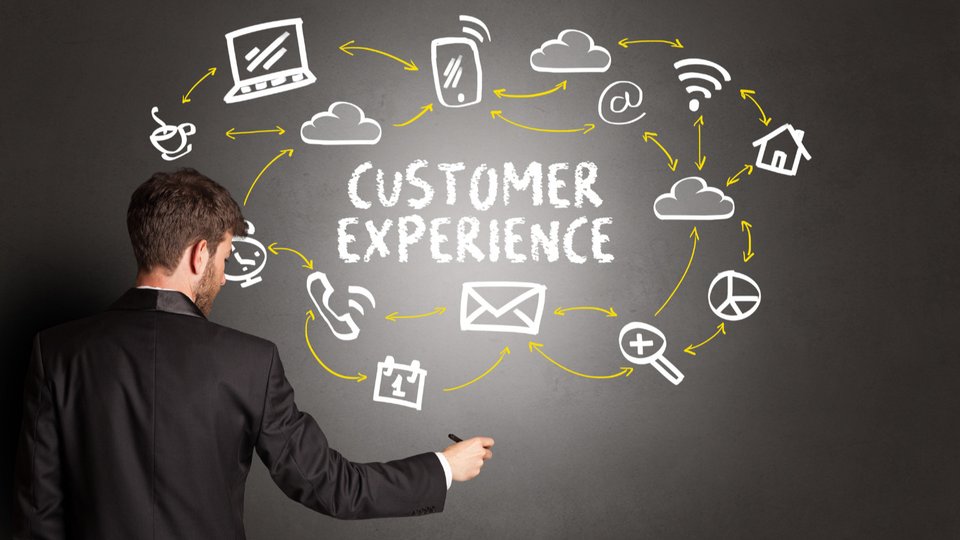Marketing
How to humanize customer engagement
Marketing — successful marketing, anyway — is ultimately about connecting with people. That human connection is the difference between the brands who become an indispensable part of their customers' lives and the brands who are ultimately forgettable.

August 5, 2022 | Sunil Thomas, co-founder and executive chairman of CleverTap
As marketers, we're used to focusing on the numbers — the conversions, the clicks, the likes. There's an endless number of KPIs vying for attention, but they don't account for one crucial element of marketing success: the people.
Marketing — successful marketing, anyway — is ultimately about connecting with people. That human connection is the difference between the brands who become an indispensable part of their customers' lives and the brands who are ultimately forgettable.
Global events and a multi-year pandemic have only increased our need for connection and being part of something bigger than ourselves. Today's consumers demand connection that feels human, and they expect the brands they support to stand for something that matters.
To succeed, brands must adapt their brand voice and advertising accordingly. They need to speak in a way that drives connection and conversions. They must speak in a way that is empathetic and emotive. In short, they need to be human.
The path from connection to conversion
Increasingly, consumers report that they are more loyal to brands that create authentic customer experiences. When a brand feels human, consumers are 80% more likely to buy their products or services. According to Nielsen, ads that produce an effective emotional response generate a 23% lift in sales volume.
Clearly, there's bottom-line value in human-centered marketing. However, it requires a big paradigm shift in the traditional approach to customer experience. Brands must update their approach from focusing on conversions to focusing on connections (which, fortunately, naturally lead to conversions). It requires a new playbook and new rules of engagement. Thankfully, there are blueprints to follow.
For example, Mastercard pulled back their advertising, at the beginning of the COVID-19 pandemic, as did many other companies. "This is not a time when you want to sell. This is the time to serve," CEO Raja Rajamannar explained. "Consumers don't want you to keep sending ads to them in a tone-deaf fashion. They're going through a crisis with a lot of fears and apprehensions. You should not show up with your ads trying to sell your wares. If you're trying to solve some problem or pain-point for people, do it. If you're not trying to solve some pain-point, then do something for the community." The brand took their own advice, pivoting their advertising to focus on their initiatives for healthcare workers.
PayU India, one of the largest ecommerce payment solutions providers in India, provides another example. Although they are a B2B business, most of their customers are sole proprietorships or self-funded, small businesses, so the brand shifted to a "consumer-like approach" that allowed them to speak to each business as an individual. During the pandemic, the brand adapted their messaging, adopting a more emotive, individualized approach that offered personalized guidance, payment updates, and more to help their customers weather the uncertainties and boost their confidence.
What does a humanized CX strategy look like?
Companies must expect that there may be, at any time, some crisis or global event looming in the background. Brands can't turn off their advertising forever, so they must adjust their approach. The best option may be surprisingly straightforward: keep it simple and sincere (or KISS, to repurpose a popular marketing acronym). Follow these tips:
- Recognize key customer pain points and how your products can solve them. Communicate your value-add via targeted messaging to highly segmented audiences.
- Speak your customers' language. Pay attention to vernacular messaging and vernacular communications. Be mindful of current events to capture the right tone.
- Be positive and proactive. Show that you understand your customers' needs and are there for them with the perfect solution, be it one of your products, a piece of content, or a charitable initiative.
These three pieces of advice align nicely with what we call the 3Cs of customer communications:
- Connection: Harness segmentation and lifecycle management to connect with customers at the right time, on the right channel, with the right message.
- Clarity: Be upfront about what you are offering or suggesting. There should be no hidden costs and no broken promises.
- Consistency: Empathy and caring know no boundaries. Tailor your marketing message to echo your brand voice and reinforce trust in similar ways across all your channels.
Infusing emotion into customer lifecycle management
Historically, marketers have relied on their own instincts and audience data to draft their marketing messages. That kind of approach is too broad, and much too slow, to work in today's world. Over 70% of consumers say they exclusively respond to personalized messaging. To create personalized, sincere, human-driven messaging at scale, marketers need a new strategy backed with technology.
That's because most marketing practices today focus on offering personalized messaging, at the right time and right place based only on customers' previous behavior and purchasing or demographic data. But, with marketers generally using less than 5% of the data available to them to make decisions, messaging often falls short in building a connection with customers. And with over half of consumers expecting brands to connect with them, marketers must consider the whole picture of their consumers — especially how they feel.
According to Robert Plutchik's Wheel of Emotion, there are eight basic human emotions (fear, joy, surprise, trust, sadness, disgust, anger, and anticipation). By first understanding that human behavior is driven by these feelings, marketers can then build messaging that is effective in creating a connection.
Instead of guessing what to write for a particular segment — however informed that guess may be — marketers should first consider which of these emotions they aim to make their customers feel. Using new technology, marketers can then enter their copy into AI-based softwares that evaluate how effective the message is at eliciting the targeted emotion.
Bolstering a strong segmentation strategy and human-centric approach to marketing with new software and technology allows marketers to humanize their brands in real-time in a way that feels authentic — and leads to powerful results. In fact, 70% of consumers who experienced a strong emotional reaction to an advertisement claimed they are "highly likely" to buy a product, compared with only 30% who experienced a moderate emotional reaction.
Putting the 'human' back in marketing
We've reached an era where the kind of tailored messaging that succeeds has a strong emotional component. Brands who feel more human in how they communicate, across all their channels, are the ones consumers increasingly want to connect with, be loyal to, and buy from.
Think mobile apps that check in and pair engagement with an element of fun or pleasant surprise or brands who develop emotion-driven campaigns that focus on improving an aspect of life that matters to their target audience.
When it comes to your customers and your bottom line, humanness matters. Seek to understand not just who your customers are and what they do and buy, but what emotionally drives them. That's the key.





